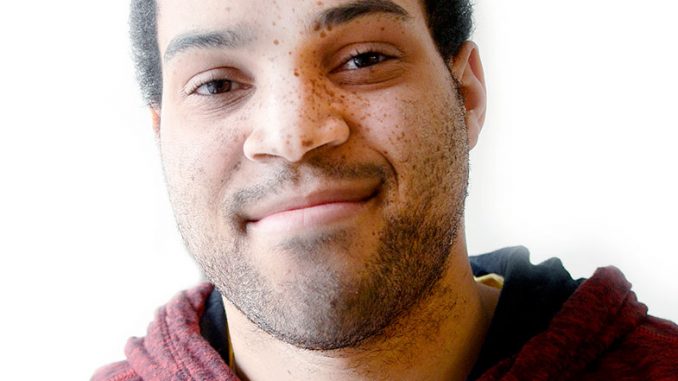
 David beat Goliath, and not many were there to witness.
David beat Goliath, and not many were there to witness.
A rainy Saturday afternoon succeeded Halloween night in North Philadelphia when many students opted to stay on Main Campus instead of taking the trip to Lincoln Financial Field to attend the football team’s matchup against nationally ranked East Carolina.
The team won its first game against a Top 25 opponent in more than a decade with an announced number of 23,882 in the crowd, but it certainly didn’t look it. In front of at least 45,000 empty seats, Temple made history.
It should have come as no surprise, however, as the team’s second season in the American Athletic Conference was also the second-lowest home attendance total of all schools in The American.
Following last year’s athletic cuts, the program has re-shifted its focus to reallocating funds, renovating facilities and building a program that succeeds from top to bottom.
In an exclusive interview with The Temple News last October, Athletic Director Kevin Clark and other high-ranking officials expressed interest in “broad-based” competition for both revenue sports like football and basketball, and non-revenue sports like fencing and tennis.
Like many successful athletic departments, however, the resources necessary to achieve such a feat begin with profitable revenue sports creating opportunities to fund other sports in order to compete on a national level financially.
A good example for the department in pursuit of its dreams is conference foe Connecticut, which ranks No. 14 in a CBS algorithm placing schools in order of most successful programs – considering revenue sports, baseball and a “wild card” spot for the rest of non-revenue sports to rank each athletic program on overall success.
In the same CBS ranking – conducted last July, Temple ranked No. 123, tied with four other schools.
Another promising example is former opponent in The American, Rutgers University, whose department moved the program into the Big Ten – a more decorated conference – in 2012. Three years later, nj.com reported that Rutgers is projecting a 16.6 percent leap in athletic revenues in 2015, currently boasting a $79 million budget as of 2014, roughly $35 million more than Temple’s last recorded athletic budget.
While the athletic department has declined to comment through a university spokesperson on the official plans for the stadium, its hopes have been made transparent.
Upon moving into The American in 2013, Deputy Athletic director Pat Kraft told The Temple News just what he envisioned for the program’s future.
“I want our student body to be loudest and most recognized in all of the country,” Kraft said. “I want to put Penn State’s student body to shame. I’ve seen it and it is so awesome, and so special. That’s what keeps me up.”
“The dynamic is changing drastically, and when you talk about a football stadium on campus, now you have more and more student living here, Kraft added. “Now that atmosphere can come.”
Not only does an on-campus stadium present the possibilities of long-term financial growth for an improving football program, it also helps the department elude imposing financial consequences of staying in Lincoln Financial Field.
President Theobald said the Eagles, who occupy the Linc, are set to increase the rent from $1.5 million where it currently sits, to $3 million per year. In addition, Temple would be required to dole out $12 million for renovations, Theobald said in an April interview with the Chronicle of Higher Education.
With cost in mind and the William Penn property in hand, Temple could follow through on sending lacrosse and field hockey to the new athletic fields, and utilize the two team’s current home of Geasey Field as a new stadium site, making the need for new property less expensive.
In October, Clark referred to the possibility as lacrosse and field hockey as “in flux.” Clark also pointed out the renovations should be complete sometime between October 2015 and April 2016.
However, the Geasey Field estate, currently at 342,450 square feet, according to Temple Recreation Facilities, would currently struggle to house a full-sized football stadium, especially one that attracts big-name football teams and conferences.
While local backlash from neighboring property owners and communities is to be expected, the seemingly-inevitable move back to campus for the football team is a necessary one, en route to a nationally-established athletic department.
EJ Smith can be reached at esmith@temple.edu


Temple having game fields on or near main campus is an absolute necessity if they/we want to be taken seriously. The 2013 average attendance was 22,472 (Slate) and the 2014 average rose to 23,370 (Wikipedia) with only one game, the blowout win over Delaware State, dipping below 20k. For many, it is simply too far out of the way to go down to The Linc or up to Ambler (for football or soccer, respectively), especially if we only have enough time between classes to catch part of the game. For those reasons, I believe having fields on or near main campus will increase attendance. Moreover, the stadium will create new jobs in the area and an additional revenue stream for the school and neighboring businesses. It is my assumption that the same people complaining about the stadium will not be attending games anyway, so let’s instead focus on the tens of thousands who will attend and want this to happen tomorrow.